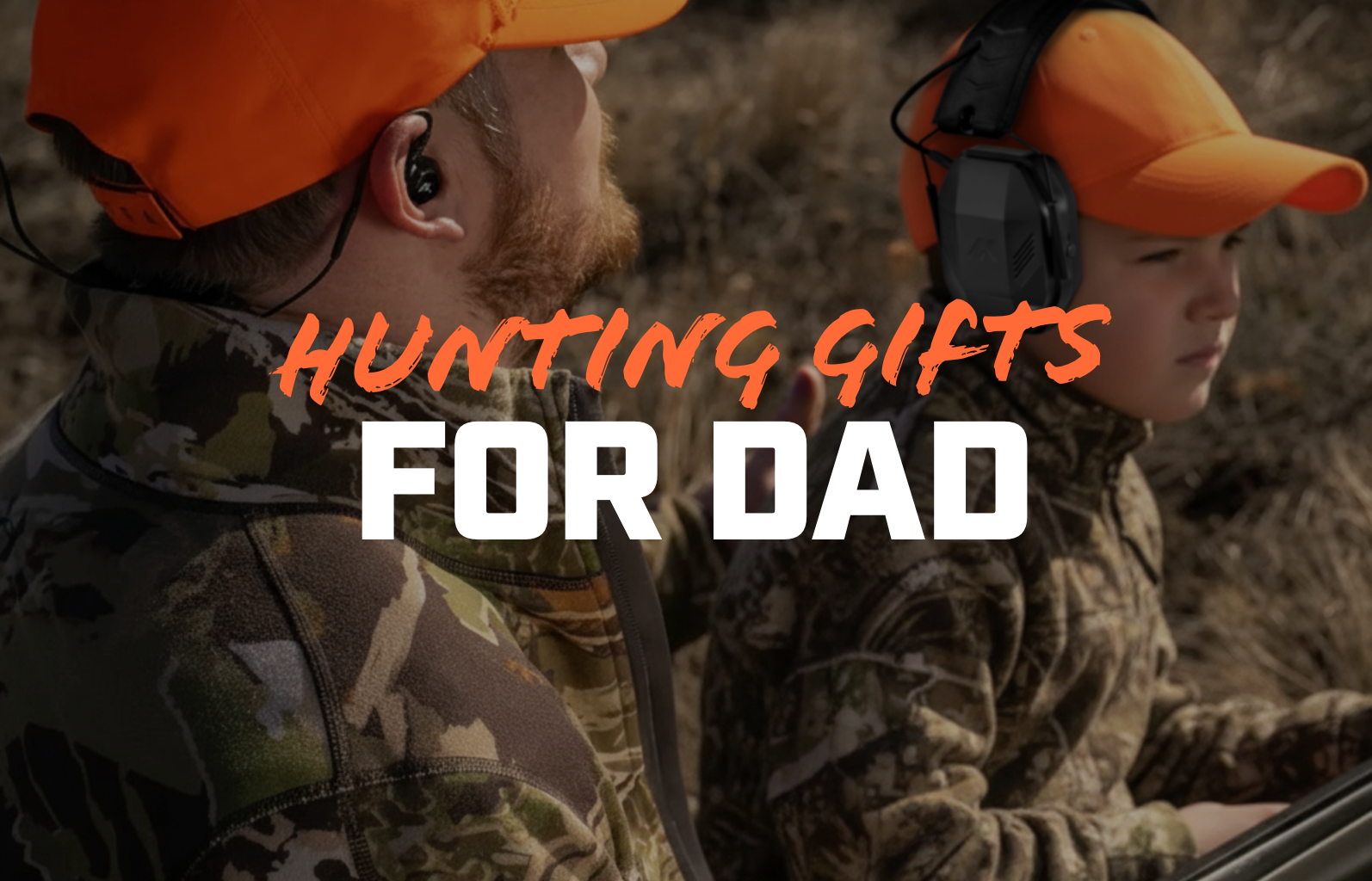Antelope hunting is a thrilling pursuit defined by wide-open prairies, long-distance shots, and one of the most watchful game animals in North America — the pronghorn antelope. Known to reach speeds up to 55 mph and equipped with razor-sharp vision, these “speed goats” present a unique challenge that calls for careful planning, relentless patience, and the right antelope hunting gear.
Unlike deep woods hunts, antelope hunts typically unfold across flat, wind-swept terrain where there’s little cover. That means you’ll be spot and stalk hunting, crawling through cactus, brush, and gravel to get within range of a shot. Your gear list needs to emphasize speed, stealth, and precision, especially when each trip can hinge on just a few fleeting moments of daylight.
Whether it’s your first trip out west or your tenth, having the right equipment — from a good spotting scope and lightweight day pack, to protective clothing and dependable optics — is absolutely essential. In this guide, we’ll break down the tools and tactics that give you the ability to spot, stalk, and tag your next trophy buck — no matter how far it runs or how fast it goes. Whether you’ve killed your first antelope or are chasing a record trophy, preparation is key.
Firearms & Ammunition for Antelope Hunting
When it comes to choosing the right rifle for antelope, your decision can make or break the hunt. These animals aren’t just fast — they’re alert, often grazing in the middle of wide-open prairie with nothing but distance and wind between you and them. That’s why flat-shooting calibers like the .243 Winchester, .270, 6.5 Creedmoor, and .30-06 Springfield are among the most popular for antelope hunts.
Most people favor bolt-action rifles for their reliability and precision. Brands like Remington and Savage offer excellent lightweight hunting rifles that are handy for long hikes and allow for stable shooting from a prone position. If you prefer something classic with a little frontier flair, lever-action models from Winchester and Henry can get the job done too — though you'll want to account for shorter ranges.
Flat-shooting rounds like those from Hornady are especially effective in open terrain, where you'll likely take shots at distances beyond 200 yards. Pair your rifle with a bipod or shooting stick for stability when it’s time to get prone and get serious. These tools save energy, improve your sight picture, and enhance accuracy — key factors when you're trying to place a well-aimed shot on a moving animal in unpredictable weather.
Whether you're sitting by the truck glassing with your binoculars or crawling through grass for a final approach, the right firearm setup is the backbone of your gear list — and one of the most important investments for a successful hunt.
Pro Tips: Firearms & Ammunition
-
Test different loads from top brands like Hornady well before the season starts — each rifle can favor a specific round, even within the same caliber.
-
If you're hunting from a blind or truck-side position, consider a compact rifle with a shorter barrel for easier maneuverability.
Always break in your new rifle at the range and film your shooting practice — it helps identify form issues and build consistency. -
Don’t forget a quality scope with a reticle optimized for long-distance shots; both Vortex and Leupold offer excellent models suited for antelope.
-
In the wide-open west, wind can be your worst enemy — get comfortable compensating for it during target practice.
-
Carrying extra ammo in a weather-resistant sleeve or stock pouch is a handy way to stay ready without fumbling through your pack.
Optics & Glass: Seeing the Speed Goats Before They See You
In the wide-open terrain where antelope hunts take place, your ability to spot a buck before it sees you can be the deciding factor between a filled tag and a long, dusty trip back to camp. Investing in high-quality optics isn’t a luxury — it’s a necessity.
Start with a solid pair of binoculars in the 10x42 range. Brands like Leupold and Vortex both make rugged, lightweight options that are ideal for spot and stalk hunting. Look for models with edge-to-edge clarity, wide range of vision, and waterproof construction — all essential when dealing with unpredictable weather and rough conditions.
For longer glassing sessions from the truck or a high vantage point, a spotting scope mounted on a tripod gives you the reach to judge trophy quality at extreme distances. Leupold and Vortex both offer scopes with advanced coatings and high-definition lenses, ideal for glassing across the prairie at first light or just before the end of daylight.
When it comes to your rifle scope, prioritize features like parallax adjustment, exposed turret dials for dialing elevation, and a clean reticle that won’t clutter your sight picture. A scope from Vortex’s Razor HD line or Leupold’s VX-5HD is absolutely worth the weight in your pack — especially when you're preparing to shoot across a dry wash or open flat.
Choosing the right equipment here is more than about seeing — it’s about success. Good glass helps you find more animals, judge meat or trophy quality, and make better-informed decisions in the field.
Pro Tips: Optics & Glass
-
Use your binoculars to scan, then switch to your spotting scope only after locating a potential buck — this saves time and reduces eye strain during long sessions.
-
Always carry a lens cloth or gloves to keep your glass clean — dust, cactus pollen, and sweat can quickly ruin a clear sight picture.
-
Practice ranging terrain markers with your rangefinder before your first trip — knowing exact distances ahead of time can make all the difference when it’s time to shoot.
-
Consider knee pads if you’ll be crawling into position for a final stalk; they’re especially handy on rocky ground or cactus flats.
-
If you're filming your hunt, use a phone adapter on your spotting scope — a great way to film the action or review footage afterward.
-
Keep extra batteries for any digital optics, especially on longer trips or when using thermals or illuminated reticles in low-light conditions.
-
A top brand like Leupold or Vortex can provide exceptional clarity for spotting scopes and binoculars.
-
Pay attention to the fine details when adjusting your scope’s turret for accuracy.
Smart Hearing in the Field: AXIL’s Hybrid Protection Advantage
When it comes to antelope hunting gear, most people focus on rifles, optics, and packs—but often overlook a critical element: hearing protection. In the wide-open prairie, staying alert to subtle wind shifts or the crunch of a hoof at a distance can be just as vital as pulling the trigger.
That’s where AXIL’s hybrid hearing gear comes in. With innovative products like the GS Extreme 2.0 and XCOR Earbuds, hunters get the best of both worlds: electronic ear protection and enhanced ambient awareness. These devices offer directional sound pickup, allowing you to hear faint animal movements, your partner’s whisper, or changes in the weather—while automatically compressing dangerous rifle blast noise.
Using AXIL’s tech on a spot and stalk hunting trip means you stay tuned into your surroundings without sacrificing your hearing health. Whether you're navigating terrain in the early season, sitting near a blind, or carrying out a first trip west, this equipment keeps you sharp and responsive—without missing a moment or a shot.
Pro Tip: The GS Extreme 2.0’s Bluetooth pairing lets you take a call or use mapping apps discreetly in the field—ideal when you start walking far from the truck and need both connectivity and safety.
Pro Tips: AXIL Hearing Gear in the Field
-
Test your AXIL earbuds before your hunt to familiarize yourself with ambient sound settings — knowing how to quickly adjust volume or switch modes saves time when daylight is fading.
-
Charge the devices fully the night before your trip, and toss a small pack with a USB power bank and extra batteries into your day pack — especially handy on multi-day antelope hunts.
-
Use one earbud in quiet moments to preserve battery while still maintaining situational awareness — ideal for long glassing sessions or slow stalks through open terrain.
-
Pair with your cell phone for real-time weather updates or wind readings without taking your eyes off the scope or your hands off the gear.
-
If you're hunting near a camp with other hunters, AXIL earbuds help you maintain quiet communication without shouting across the prairie, which might spook your animal.
Clothing and Boots for the Open Prairie
In antelope country, clothing isn’t just about comfort—it’s part of your stealth strategy. Pronghorn thrive in wide-open terrain, where cover is limited and visibility is everything. The right gear list starts with camo patterns that match the prairie. Mossy Oak Brush or Realtree Max-1 XT are top picks for blending into sagebrush and arid landscapes, giving hunters a visual edge.
Start with breathable, scent-suppressing base layers. During the early season, temps can swing from cool mornings to blazing afternoons, so layers that wick sweat and manage weather shifts are essential. Don’t overlook rain gear — even in dry states, storms can roll across the plains fast.
When it’s time to start walking, your boots matter just as much as your rifle. Kenetrek’s lightweight hiking boots offer durability, ankle support, and comfort for long spot and stalk hunting sessions. For a more economical option, Irish Setter offers high-quality antelope hunting boots at a more affordable price point.
On flat prairie stalks, staying light on your feet helps you close distance on a wary buck without being spotted. Choose boots that are breathable but waterproof, and always break them in before your first trip.
Pro Tips: Clothing and Boots
-
Pack a spare pair of socks in your day pack — dry feet are key when covering miles after speed goats. Wet socks can ruin your trip fast.
-
Knee pads can be a game-changer during low crawls across cactus-ridden ground.
-
Avoid over-layering. A lightweight outer shell over base layers gives you the ability to adapt to shifting seasonal temps without overheating.
-
Always check for space in your pack to stuff a thin rain jacket, even on clear days — prairie weather can change in minutes.
-
Gloves are great not just for warmth, but also for crawling undetected over rough terrain or handling your rifle after a long stalk.
Rangefinders, Wind Meters, and Precision Tools
Antelope are small-bodied animals with an uncanny ability to look like a rock or bush at 400 yards—until they bolt. That’s why range estimation is one of the most critical skills in antelope hunting gear. On open prairie terrain, there’s little room for guessing.
A top-quality rangefinder ensures long-range shots land true. Look for features like angle compensation, brightness settings for full daylight, and a fast response time. Brands like Leupold and Vortex offer excellent optics with integrated rangefinding capabilities. The Leupold RX-FullDraw 5 and Vortex Razor HD 4000 are both reliable choices for spotting and ranging pronghorn bucks at extended distances.
Wind meters, like those from Kestrel, are another essential part of your gear list. Open plains mean open wind, and gusts can throw even a flat-shooting .243 or 6.5 Creedmoor off target. A good wind meter allows you to read changes in speed and direction, then adjust your scope or shot accordingly.
In these elements, AXIL’s hybrid gear — like the GS Extreme 2.0 — complements your kit. Not only do they provide ear protection, but their ambient sound tech helps you detect subtle wind shifts, animal movement, or communication from your hunting partner even during a breeze.
Pro Tips: Nailing Long-Range Shots
-
Always range more than once. Mirages and heat waves can throw off your first reading. Use a tripod for a steadier aim.
-
Practice with your wind meter before the season. Knowing how to apply wind data in the field is a skill that most people overlook.
-
Keep your rangefinder on a lanyard or tethered to your bino harness for quick access during a fast-moving spot and stalk.
-
If you’re filming your hunt, range and mark your distances before setting up the shot—this helps preserve your trophy memory and saves time in the moment.
Day Packs and Load Management
On antelope hunts, mobility is everything. Whether you're glassing from a ridge or crawling through cactus during a spot and stalk hunting session, the right day pack keeps your gear secure without slowing you down.
Top brands like Stone Glacier and Mystery Ranch make excellent lightweight packs designed for speed goats and open terrain. These packs balance space, comfort, and durability, letting you haul water, optics, and game bags without weighing yourself down. Look for models with integrated hydration systems and room for essentials like your knife, multi-tool, lightweight tripod, and compact rain gear.
Choose antelope-specific game bags or even pillowcases for meat transport—they’re breathable, reduce bacteria, and work well for daylight hauls back to the truck or camp. Don’t forget gloves, tag holders, and a small first-aid kit, especially on your first trip into unfamiliar terrain.
The goal? Pack smart. Carry only what you need, but don’t skimp on essentials. The pronghorn lives in a vast, arid country where going light and staying mobile is key to success.
Pro Tips: Stay Fast, Stay Ready
-
Keep your water bottle on the outside of your pack for quick access, and stash a backup bladder for longer hikes.
-
Start walking before the sun’s up. You’ll cover more range in cooler temps and avoid weather surprises.
-
Use compression straps to stabilize equipment so nothing rattles—most animals, especially pronghorn, bolt at unusual sounds.
-
A spare set of extra batteries for your spotting scope, rangefinder, or film gear takes up minimal space and might save your trip.
-
Don’t just throw your gear into the pack; organize it for quick access.
Survival and Navigation Essentials
In the wide-open terrain of the West, staying oriented and safe is as crucial as having a good rifle. With antelope often spotted at long distances, and the terrain full of cactus, uneven prairie, and sudden weather shifts, navigation and safety tools can make or break your hunt.
GPS units from trusted names like Garmin, or offline hunting apps like onX and HuntStand, give you access to private/public land boundaries, tag zones, and terrain features even without a signal. Keep a paper backup in your pack, just in case.
In snake-prone zones, snake gaiters are an absolutely essential form of protection, especially during early season when visibility is lower. Likewise, tick repellents, long clothing layers, and gloves help prevent bites while crawling through brush.
A compact first aid kit should be a non-negotiable item in every day pack. Brands like AXIL emphasize preparedness with gear that goes beyond hearing protection—their attention to field-ready design supports overall hunter safety. Include essentials like moleskin for blisters, gauze, bandages, and antihistamines.
Finally, don’t forget sunscreen, chapstick, and staying hydrated in high-altitude weather. Altitude awareness matters—most people aren’t used to exerting themselves in thinner air.
Pro Tips: Stay Safe, Stay Smart
-
Pre-download your maps in OnX or HuntStand—you’ll still have full functionality even when you lose daylight or cell service.
-
A good pair of gloves and knee pads prevents cuts and scrapes when spot and stalk hunting low to the ground.
-
Don’t overlook small stuff like chapstick or a blister kit—tiny items that can save a trip.
-
Store your first-aid kit in an easily accessible part of your gear list. Emergencies don’t wait.
Conclusion: In Antelope Country, The Right Gear Makes All the Difference
Chasing speed goats across the open prairie isn't just about sharp shooting—it's about planning, endurance, and smart decisions. From your boots to your spotting scope, every piece of gear matters. Whether you're on your first trip or refining your setup after multiple antelope hunts, having the right equipment gives you the ability to move fast, stay hidden, and react with precision.
Brands like AXIL make a real difference when it comes to protection and communication. Their hybrid hearing devices allow you to hear the faintest movement while guarding your ears against gunfire. In unpredictable weather and expansive terrain, being alert and connected to your hunting partner isn’t optional—it’s essential.
From breathable clothing and waterproof day packs to flat-shooting rifles and ultra-clear optics, success in pronghorn country depends on choosing gear that enhances your speed and stealth. The right pack, the right rangefinder, and even the right knife can be the difference between a tag filled or a long drive back to the truck empty-handed.
Elevate your hunt. Trust in performance-driven gear. Make every step, every sight, and every shot count.










 Accessibility
Accessibility

Share:
Best Ear Plugs for Airplanes & Travel
Best Earplugs for Sleeping: Block the Noise, Keep the Comfort